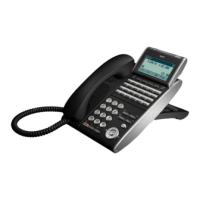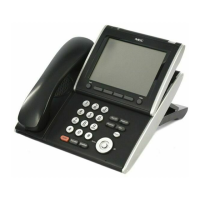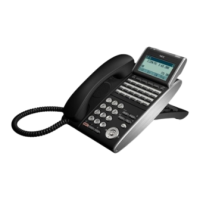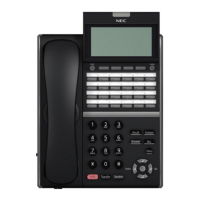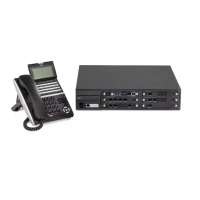3. There are two choices: RTP and SIP. RTP = voice packets and SIP = signaling packets.
Select each field and assign the appropriate value. Then select OK.
These fields are also looking for a Hexadecimal value as with command 84-23. Refer to
Table 9-3 Common IP Precedence/Diffserv Values and Hexadecimal Equivalent on page 9-24.
Access the following menus to select options:
• RTP - Voice Packets
• SIP - Signaling Packets
Figure 9-21 RTP - Voice Packets
Figure 9-22 SIP - Signaling Packets
4. After selecting Save, the following message appears.
5. Select OK and the phone reboots. Once online, the phone tags all packets with the applied
settings.
13.6.2 Assign Values on IP Terminal
The following is an example of assigning fields on the IP terminal.
1. Press Hold, Transfer, *, #.
2. Enter the user name of ADMIN and password of 6633222, and press the OK softkey.
3. Press 1 on the dial pad for Network Settings.
4. Press 6 on the dial pad for Advanced Settings.
5. Press 4 on the dial pad for Type of Service.
6. There are two options (1) is RTP and (2) is SIP.
7. Press 1 on the dial pad for RTP (voice packets), enter the hexadecimal value, and then press the
OK soft key.
8. Press 2 on the dial pad for SIP (Signaling packets), enter the hexadecimal value, and then press
the OK soft key.
9. If no more changes are to be made, press the Exit soft key three times, and then press the Save
soft key. The phone reboots.
13.7 Bandwidth
The bandwidth required for VoIP calls depends on the following factors.
• Layer 2 media
• CODEC
• Packet Size
• RTP Header Compression
SL2100
ISSUE 1.0
9-26
IP Multiline Station (SIP)

